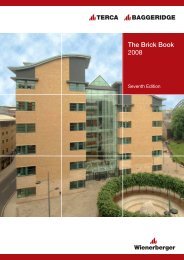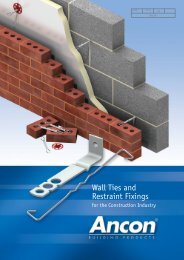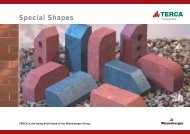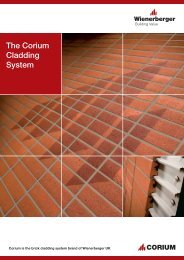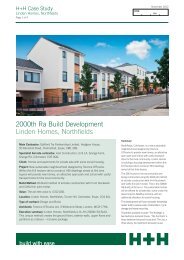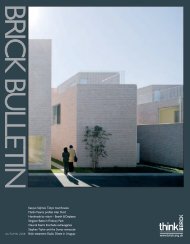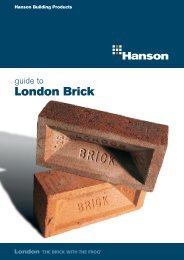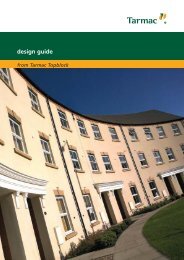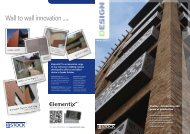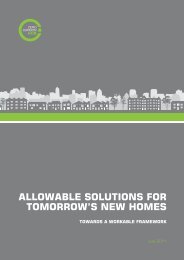Code for sustainable homes: case studies volume 2 - Gov.uk
Code for sustainable homes: case studies volume 2 - Gov.uk
Code for sustainable homes: case studies volume 2 - Gov.uk
You also want an ePaper? Increase the reach of your titles
YUMPU automatically turns print PDFs into web optimized ePapers that Google loves.
Buyer/Occupant<br />
Feedback<br />
All of the 10 units are occupied by housing<br />
association residents. A full handover pack<br />
was provided including standard in<strong>for</strong>mation<br />
on how to use the home, and additional<br />
in<strong>for</strong>mation related to the <strong>Code</strong> Level 3<br />
elements, including the solar panels and<br />
heating control system.<br />
The living room of one of the <strong>homes</strong><br />
Isos undertakes a new home survey with all<br />
residents after six months of occupancy, which<br />
is yet to be carried out at the Southcroft Park<br />
development. Isos also invite residents to join<br />
a panel to discuss issues related to the <strong>homes</strong><br />
they occupy. This is then fed back into the<br />
housing association design brief to assist future<br />
developments being built to the levels of the <strong>Code</strong>.<br />
‘Residents of the Southcroft Park<br />
<strong>homes</strong> will see a small saving on<br />
their energy bills compared to their<br />
previous <strong>homes</strong>, depending on how<br />
the home is used. Isos has been<br />
building <strong>Code</strong> Level 3 units <strong>for</strong> the<br />
past year and we are currently moving<br />
to <strong>Code</strong> Level 4. It is at this level and<br />
beyond that we anticipate seeing<br />
greater savings <strong>for</strong> our residents<br />
on their energy bills.’<br />
Lea Smith, Development and<br />
Regeneration Manager, Isos<br />
Housing Group<br />
LESSONS LEARNT<br />
The main lessons learnt from the development<br />
have been:<br />
• It is important that evidence is gathered <strong>for</strong><br />
the post-construction certification as early<br />
as possible during the construction process.<br />
This includes taking photographs of those<br />
areas which will be hidden at the end of the<br />
construction process (eg insulation) as well<br />
as the site management processes (eg dust<br />
management)<br />
• Ensure that the site managers are aware<br />
of the <strong>Code</strong> requirements and the process<br />
so they know what activities need to be<br />
managed and monitored at a site level<br />
(waste, energy, water data collection<br />
and collation)<br />
• Achieving the minimum mandatory energy<br />
credits <strong>for</strong> <strong>Code</strong> Level 3 typically requires<br />
the use of renewable energy generating<br />
technologies which can incur additional<br />
costs both <strong>for</strong> the products and <strong>for</strong> training<br />
the work<strong>for</strong>ce to know how to install<br />
these correctly<br />
• Occupants must be given detailed<br />
in<strong>for</strong>mation on how to use the home<br />
correctly. On developments where the<br />
heating, hot water and lighting systems<br />
are more complicated than new owners<br />
may be used to, the handover and home<br />
demonstration must be sufficient to explain<br />
systems to the resident. When handing over<br />
<strong>homes</strong> to housing a ssociations, the Home<br />
Owners Guide is critical to ensure the<br />
in<strong>for</strong>mation is handed onto the resident<br />
in the most appropriate manner, as the<br />
developer will not necessarily be able<br />
to offer a home demonstration<br />
CASE STUDY 6 | CODE FOR SUSTAINABLE HOMES | 23



